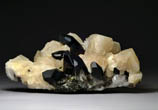William Hunter
 William Hunter’s World: the Art and Science of Eighteenth Century Collecting
William Hunter’s World: the Art and Science of Eighteenth Century Collecting
edited by Geoff Hancock, Nick Pearce and Mungo Campbell to be published 2014 by Ashgate.
This publication on medical man and collector, Dr William Hunter (1718-83) results from a conference marking the 200th anniversary of the opening of The Hunterian Museum in Scotland. The papers provide original approaches to a man and the collection whose importance is comprehensively assessed. The essays explore collecting practices in eighteenth century Europe and range from medical and scientific specimens, to painting, prints, books and manuscripts. They will provide a comprehensive picture of William Hunter’s collection.
William Hunter can be seen at the forefront of the next generation of medical men whose research and amassing of specimens transformed our understanding of the natural world and man’s position within it. Hunter’s collection became the foundation of Scotland’s oldest public museum. During his lifetime Hunter was recognised as a great anatomist, whose work encompassed teaching anatomy to artists at the Royal Academy of Arts and Fellowship of the Royal Society. His circle of friends included Captain James Cook, Sir Joseph Banks, Edmund Burke and Sir Joshua Reynolds. His collecting activities included a magnificent library of manuscripts and books, a coin collection second only to that of the King of France, natural history specimens, antiquities, paintings, as well as anatomical and pathological items.
Image 1. A fine specimen of smoky quartz and calcite from William Hunter’s collection, bought from Jacob Forster in 1780 for twelve guineas.

